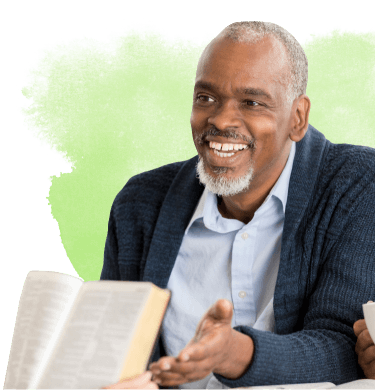Characteristic Symptoms
Anxiety is a normal cognitive and physiological response designed to call our attention to the seriousness of an event or situation, and motivate us to action. Anxiety disorders are not mild and brief, but severe and chronic. Panic attacks, a consuming wave of fear and dread, are a common characteristic of the anxiety disorders.
A panic attack is a sudden surge of overwhelming fear and anxiety that reaches a peak within minutes. The DSM-5 lists 13 potential symptoms of a panic attack:
- Increased heart rate
- Sweating
- Trembling
- Shortness of breath
- Feelings of choking
- Chest pain
- Nausea
- Dizziness
- Chills or heat sensations
- Numbness or tingling
- Feelings of unreality or depersonalization
- Fear of losing control
- Fear of dying
Four or more of these symptoms must be present for the episode to be considered a panic attack. A panic attack may be a one-time occurrence in an individual’s life, but many people experience multiple episodes.
Types of Anxiety Disorders
SEPARATION ANXIETY DISORDER
Separation Anxiety Disorder is an inappropriate and excessive fear or anxiety concerning separation from home or those to whom the individual is attached. The fear or anxiety is persistent, lasting at least four weeks in children and adolescents, and six months or more in adults.
SELECTIVE MUTISM
Selective Mutism is a failure to speak in some social settings and to some people for at least one month. A child with selective mutism may talk normally at home, or when alone with their parents, but cannot speak at all, or speak above a whisper, in other social settings.
Some people’s lives become restricted to the point that they avoid everyday activities…
SPECIFIC PHOBIA
Specific Phobia is extreme and irrational fear or anxiety about a specific object or situation. Specific phobias commonly focus on animals, insects, germs, heights, thunder, driving, public transportation, flying, dental or medical procedures, and elevators.
SOCIAL ANXIETY DISORDER
Social Anxiety Disorder is marked fear or anxiety about social situations in which the individual is exposed to possible scrutiny or judgment by others. The fear or anxiety causes clinically significant distress, lasting for six months or more.
PANIC DISORDER
Panic Disorder is recurrent panic attacks striking suddenly and without warning. Persons with panic disorder often develop intense anxiety between episodes, worrying about when and where the next panic attack will occur. Some people’s lives become restricted to the point that they avoid even everyday activities, such as driving or going to the store.
AGORAPHOBIA
Agoraphobia is characterized by the avoidance of situations or places in which it is thought that escape might be difficult, or help unavailable in the event of a panic attack or other incapacitating or embarrassing symptoms.
GENERALIZED ANXIETY DISORDER (GAD)
Generalized Anxiety Disorder (GAD) is excessive anxiety and worry, even though there is little or nothing to provoke it. The anxiety is severe enough to affect the individual’s ability to function in their daily lives. The person will often recognize that their anxiety is more intense than the situation warrants, however, they may have difficulty in controlling these thoughts and feelings. With GAD, the anxiety is usually accompanied by physical symptoms such as fatigue, sleeplessness, headache, muscle tension, sweating, shortness of breath, irritability, and hot flashes.
Prevalence and Age of Onset
Anxiety disorders are the most common mental illness in the United States, affecting approximately 40 million adults (18% of the population). Women are twice as likely to be diagnosed with an anxiety disorder as men. The age of onset of selective mutism is usually before 5 years while separation anxiety disorder, specific phobia, and social anxiety disorder usually first manifest in later childhood. The common age of onset for panic disorder and agoraphobia is early adulthood while generalized anxiety disorder has the latest onset of the anxiety disorders, around 30 years. Individuals with anxiety disorders are at high risk for coexisting conditions, such as depression and substance abuse.

Treatment & Support
ANXIOLYTICS
Anxiolytic (anxiety-relieving) drugs are available for health professionals to prescribe. The most common side effect of these drugs is daytime drowsiness, or what some have described as a “hung-over feeling.” Benzodiazepines lower anxiety by increasing the activity of the neurotransmitter GABA. Due to risk of dependency, individuals with substance-abuse problems are not good candidates for treatment with benzodiazepines.
Buspirone (BuSpar) is a unique anxiolytic agent found to be effective in treating generalized anxiety disorder. While the exact mechanism of action for Buspirone is unknown, its anti-anxiety effects are the result of changes produced in the serotonin neurotransmitter system. Common side effects include dizziness, drowsiness, and nausea. Unlike the benzodiazepines, Buspirone is not addictive and must be taken for at least two weeks to counteract the symptoms of anxiety.

ANTIDEPRESSANTS
Due to the addictive risks associated with benzodiazepines, antidepressant medications— particularly selective serotonin reuptake inhibitors (SSRIs)—are increasingly being used as the initial treatment for anxiety disorders. Examples of SSRIs include Prozac, Zoloft, Paxil, and Celexa.
As mentioned previously, these drugs work specifically to increase levels of serotonin in the brain. Older medications, such as tricyclic antidepressants (e.g., Anafranil) and monoamine oxidase inhibitors (e.g., Nardil) that affect a wider range of neurotransmitters are also prescribed for anxiety disorders. These medications have been shown to be as effective as the SSRIs in treating anxiety disorders, but because the side effects of these medications can be severe, most physicians and patients prefer the SSRIs.
PSYCHOTHERAPY
The psychotherapeutic approach shown to be most effective in treating anxiety disorders is cognitive-behavioral therapy (CBT). CBT reduces anxiety by eliminating beliefs and behaviors that maintain the disorder. To be effective, the therapy must be specific to the individual’s anxieties. For example, an individual with a specific phobia who is fearful of dirt and germs may be encouraged to actually get his or her hands dirty during a session. As anxiety builds because of the “contamination,” the therapist works with the patient to develop skills for managing the physical sensations and negative thoughts. Over a number of sessions, the therapist might encourage the person to wait for increasingly longer periods of time before washing. Treatment usually lasts from twelve to twenty weeks.
A Spiritual Perspective
The anxiety disorders are brain disorders. The overwhelming panic described by David in Psalm 55 is not the same as the normal levels of worry and concern that Jesus talks about in the Sermon on the Mount (Matthew 6:25–34), and the apostles Paul (Philippians 4:6) and Peter (1 Peter 5:7) mention in their epistles. As the Body of Christ we must be aware that the great truth the Bible does teach us about anxiety is that when we do struggle, God is present (Psalm 94:19), taking care of our needs and providing the sustaining grace needed to persevere in a fallen world.

Learn more about other mental health disorders.
